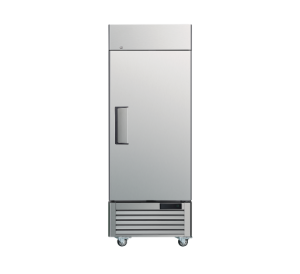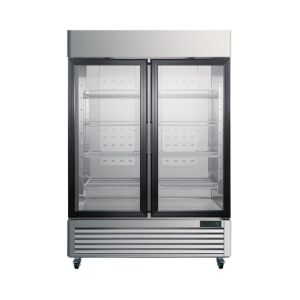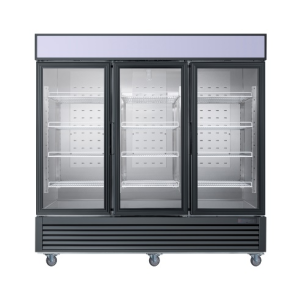
Tips for checking when your refrigerator stops cooling
When a Commercial Refrigerator Stops Cooling, Follow These Initial Self-Check Steps to Quickly Identify and Resolve Issues:
- Check Power Supply
① Power Connection: Ensure the plug is securely inserted and the outlet is functional (test with another device).
② Circuit Breaker Status: Check if the circuit breaker in the electrical panel has tripped. Reset it and monitor for repeated tripping (indicating a short circuit or overload).
③ Voltage Stability: Use a multimeter to verify voltage matches requirements. Voltage fluctuations may prevent compressor startup.

- Verify Temperature Settings
① Thermostat Settings: Confirm the control panel settings are correct (e.g., not accidentally set to “OFF” or high temperatures).
② Error Codes: If the display shows codes like “E1” or “E2,” consult the manual for error definitions.
- Clean Condenser and Evaporator
① Clogged Condenser: Locate the condenser (usually at the back or bottom) and remove dust/debris using a soft brush or vacuum (poor airflow reduces cooling efficiency).
② Frosted Evaporator: For frost buildup (common in frost-free models), check if the defrost system has failed. Manually defrost and restart.
- Inspect Door Seal Integrity
① Damaged Seals: Check door gaskets for cracks, deformation, or food residue. Clean with a damp cloth.
② Seal Test: Close the door with a piece of paper trapped. If easily pulled out, the seal is faulty. Replace the gasket or temporarily reshape it with a hairdryer.

- Listen to Compressor Operation
① Startup Sounds: Listen for a humming/vibration from the compressor. If silent:
② Starter/Relay Issues: Lightly tap the compressor casing (to unstick it) or replace the starter.
③ Faulty Capacitor: Requires professional testing.
④ Continuous Weak Cooling: May indicate refrigerant leaks or compressor wear—contact a technician.
- Check for Refrigerant Leaks
① Oil Stains: Look for oily residue near pipes or joints (refrigerant leaks often accompany lubricant seepage).
② Pressure Testing: Professionals must handle refrigerant checks—do not attempt DIY repairs.
- Evaluate Usage Patterns
① Overloading: Ensure food items don’t block airflow. Leave 20% space free around vents.
② Frequent Door Opening: Excessive door openings or improper sealing can disrupt cooling. Train staff on proper use.
- Other Potential Causes
① Fan Failure (Frost-Free Models): Listen for internal fan operation. A stalled fan halts airflow.
② Sensor Malfunction: Faulty temperature sensors may cause incorrect readings—require professional diagnosis.

If Unresolved
If cooling isn’t restored after these checks, contact a certified technician immediately. Avoid DIY repairs involving electrical components or refrigerants. Commercial units often require urgent service to minimize business disruption.
Tip: Keep records of unusual noises, error codes, or pre-failure operations to assist technicians in diagnostics. Regular maintenance reduces breakdown risks.
Keywords:
